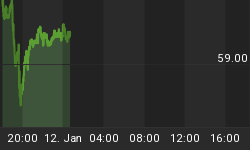Last week, the Commerce Department reported that retail sales increased 0.5% in April from March. The largest decrease in month-over-month results was in building materials, down 1.6%. This was the largest decline since February 2003. The year-over-year growth was 5.2% higher, yet this was the slowest pace since August 2004. Automotive sales declined 3.7% from a year ago and accounted for much of weakness. Excluding auto sales, retail sales increased 7.9% from last April. While this was still significantly slower than the previous three months, the average monthly year-over-year gain for the first quarter was 9.5%, not much slower than the average year-over-year gain of 8.4% during 2005.
Several of the leading retail companies reported earnings this week. Target reported first quarter earnings per share increased 11.0%, but results were four cents lower than analysts estimates. Sales increased 12% and same store sales rose 5.1%, driven by a 1% gain in traffic and a 4% increase in average ticket. Gross margin dropped to 32.18% from 32.36% last year and SG&A expense increased 70 basis points to 23%. The company said part of the increase in SG&A was due to remodeling and investments in gross margin. However, 40% of the increase was due to "core underlying expense drivers, such as store payroll and utilities." The company noted strength in toys, children's apparel along with consumables. Home business was the only category that was disappointing.
Wal-Mart reported that sales rose 12% during the first quarter. Same store sales advanced 3.8%. Unlike Target, Wal-Mart was able to expand gross margin 60 basis points to 23.6%, but did experience higher SG&A costs. SG&A rose from 18.6% of sales to 19%. Interestingly, the company noted that it continued "to see higher gasoline and utility prices affecting our customers around the world."
Home Depot reported that earnings per share rose 19% on the strength of appliance sales and building materials. Revenue increased 13%, which disappointed investors. Robert Nardelli, CEO of Home Depot, said that flooring and seasonal merchandise was weak during the quarter, but this was not due to the housing market slowing. Same store sales rose 5.7%. Same store sales were driven by an increase in the average transaction, which increased 4.3%. The increase in average ticket was helped by higher appliance sales. Interestingly, the company said it will no longer report same store sales results. This spooked investors and sent the shares down about 5%.
Producer prices rose 0.9% in April and excluding food and energy, producer prices rose 0.1%. Year-over-year, producer prices increased 4.0%, slightly higher than the 3.8% increase registered in March. Investors were relieved by this relatively benign inflation data and were anticipating the Fed to pause in June. On Wednesday, everything changed. The Bureau of Labor Statistics reported that the Consumer Price Index rose 0.6% in April. This was both higher than March (0.4%) and higher than economists were expecting (0.5%). Additionally, excluding food and energy, consumer prices rose 0.3%, the same as last month and 10 basis points higher than estimates. On a year-over-year basis, prices were 3.5% higher than last year and the core rate was 2.3% higher. The increase in the core inflation rate was the highest since March 2003.
Owner's equivalent rent rose 3.0% from last year. This is the fastest pace since February 2003. Ironically, the CPI calculation of real estate inflation is accelerating when most other measures indicate that housing prices have started to moderate. This is likely due to the recent increase in interest rates. Since the calculation of owner's equivalent rent is based on a survey of homeowners asking what they think the market rent of their house would be, it can be influenced by the about of their monthly mortgage payment. The surge in adjustable rate mortgages over the past two years would put more homeowners at risk for higher mortgage payments now that short-term interest rates have move higher. Even if their mortgage has not reset to the higher interest rates, homeowners with ARMs are likely monitoring interest rates and know that their payments would be higher if their mortgage did reset. There has also been a significant number of homeowners that have refinanced their ARM to a fixed rate mortgage. While this reduces the risk of significantly higher mortgage payments in the future, it is likely their mortgage payments increased when they switched to a fixed rate.
The housing market continues to weaken. Housing starts dropped 7.4% to an annualized rate of 1.849 million units in April. This was the slowest pace since November 2004 and about 100,000 units slower than estimates. The prospects do not appear promising either. The number of building permits issued fell 5.4% to an annual pace of 1.984 million. The National Association of Home Builders also reported that builder confidence fell five points to 45. This was the lowest level since June 1995. Also pointing to continued weakness was the seven point drop to 32 in the index that measures buyer traffic.
The manufacturing sector appears to be the strongest area of the economy. The sector is clearly benefiting from strong global economic growth coupled with a weak dollar. This week, the Federal Reserve reported that industrial production rose 0.8% in April and was 4.7% higher than last year. It was the strongest year-over-year growth since October 2004. Not surprising, capacity utilization continued to increase and was the highest since July 2000.
We have discussed for the past year that there was a significant likelihood that consumer prices would lag the rise in commodity prices. It appears inflation is starting to seep into consumer prices. This is happening at the same time as evidence mounts that the economy has started to moderate and most economists are forecasting growth to slow during the second half of the year. Given these two developments, it shouldn't be much longer until economic commentary starts using the word "stagflation."















